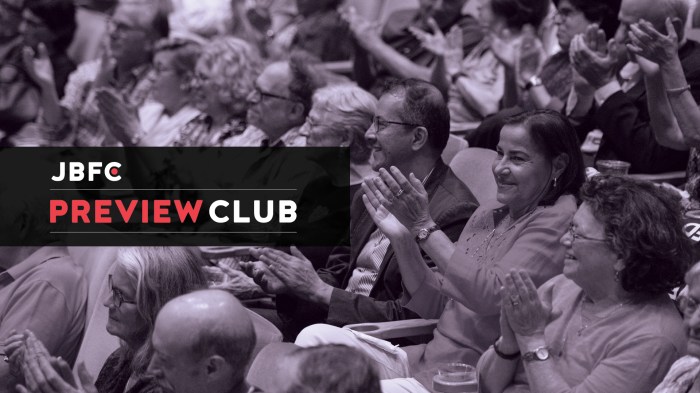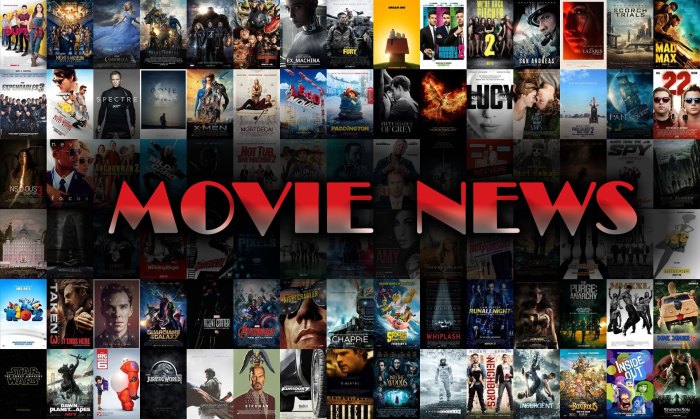Directors in movies shape the very essence of cinematic experience. From crafting visual narratives to influencing audience perception, directors wield immense power in bringing stories to life. This exploration delves into the multifaceted roles and impact of directors throughout film history, examining their styles, techniques, and contributions to the art form.
The analysis encompasses various aspects, including directorial styles and techniques, their impact on narrative structure, their responsibilities during film production, their influence on visual storytelling, and the complex relationship between directorial choices and audience reception. Furthermore, a deeper understanding of directors’ influence within specific genres and their impact on film history is explored.
Directorial Styles and Techniques
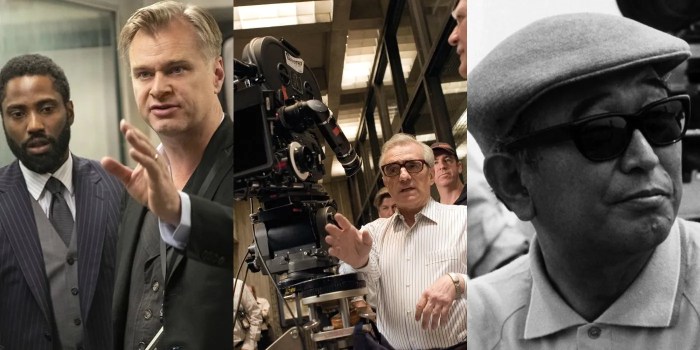
Filmmaking is a multifaceted art form, and directors employ diverse styles and techniques to shape their cinematic visions. Understanding these approaches reveals the nuanced ways directors craft their narratives, communicate themes, and engage audiences. From the meticulous precision of auteur cinema to the raw immediacy of neo-realism, each style offers a unique window into the director’s creative process.Directors skillfully utilize various techniques to convey complex emotions and ideas.
These techniques, from camera angles and lighting to editing and sound design, are employed in a myriad of ways to enhance the storytelling and resonate with viewers. Exploring these techniques provides insight into the directorial choices that shape the cinematic experience.
Cinematic Styles
Different cinematic styles offer distinct approaches to filmmaking. Auteur cinema, exemplified by directors like Alfred Hitchcock and Stanley Kubrick, prioritizes the director’s personal vision and artistic signature. Neo-realism, prevalent in Italian films of the 1940s and 50s, aims for realism and authenticity, often depicting everyday life and social issues. Experimental cinema, with figures like Maya Deren and Stan Brakhage, pushes the boundaries of traditional filmmaking, incorporating innovative techniques and abstract concepts.
These styles are not mutually exclusive; directors often blend elements from various approaches to achieve a unique aesthetic.
Directorial Techniques for Mood and Theme
Directors utilize a range of techniques to convey specific moods and themes. Camera angles, for instance, can evoke a sense of power (high-angle shot) or vulnerability (low-angle shot). Lighting can create a dramatic atmosphere (high-contrast lighting) or a sense of intimacy (soft, diffused lighting). Editing techniques, such as pacing and cuts, play a crucial role in shaping the emotional impact of a scene.
Sound design, including music and sound effects, also significantly influences the mood and atmosphere.
Comparison of Directorial Approaches
Comparing the approaches of renowned directors reveals distinct styles. For instance, the meticulous planning and suspenseful atmosphere of Hitchcock’s films contrast sharply with the improvisational and socially conscious style of Jean-Luc Godard. While Hitchcock’s films often emphasize suspense and psychological thrillers, Godard frequently explores political and social commentary in his work. These differences in approach contribute to the diverse and rich tapestry of cinematic expression.
Genre-Specific Techniques
| Genre | Technique | Example Director |
|---|---|---|
| Horror | High-contrast lighting, jump scares, suspenseful music, use of shadows and darkness, slow-motion shots | Alfred Hitchcock (Psycho), Wes Craven (A Nightmare on Elm Street) |
| Comedy | Physical humor, witty dialogue, slapstick, fast-paced editing, unexpected twists, visual gags | Billy Wilder (Some Like It Hot), Charlie Chaplin (The Great Dictator) |
| Drama | Character-driven narratives, realistic dialogue, nuanced performances, emotional depth, detailed cinematography, slow-paced sequences, emotional close-ups | Akira Kurosawa (Seven Samurai), Steven Spielberg (Schindler’s List) |
These techniques, when effectively combined, create a compelling narrative experience that resonates with audiences. Directors utilize these elements to craft a specific atmosphere, establish character, and communicate complex ideas.
Director’s Impact on Narrative
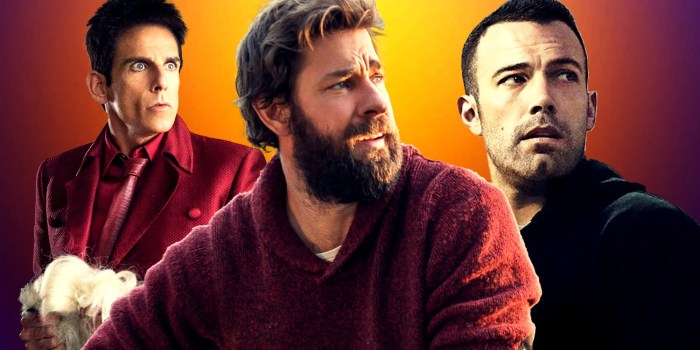
A director’s vision profoundly shapes a film’s narrative, extending beyond mere technical execution to influence the very essence of the story. This impact encompasses the plot’s structure, the characters’ journeys, and the overarching themes explored. A director’s choices in every aspect of production, from casting to cinematography, contribute to the audience’s understanding and emotional response to the narrative.The director is the architect of the cinematic experience, meticulously crafting the narrative through careful selection and arrangement of elements.
This creative control allows the director to manipulate plot points, develop characters, and establish themes in a way that resonates with the audience. This process involves not just telling a story but also imbuing it with a unique perspective and emotional depth.
Plot Shaping and Character Development
The director’s understanding of narrative structure significantly impacts the film’s plot. A director can choose to follow a linear narrative, or employ non-linear techniques, flashbacks, or dream sequences, each with a distinct effect on the pacing and the audience’s engagement. This skillful manipulation can create suspense, surprise, or a particular emotional impact on the audience. Furthermore, the director plays a critical role in character development.
Through dialogue, actions, and the director’s interpretation of the script, the character’s motivations and inner conflicts become tangible and relatable.
Manipulation of Narrative Elements
Directors use various techniques to influence the audience’s experience. For example, the use of specific camera angles and shots can emphasize certain emotions or create a sense of mystery. The pacing of the film, including the duration of scenes and the frequency of cuts, can control the emotional response and the flow of information. These elements, when used deliberately, can create specific moods and evoke particular reactions in the audience.
The use of suspenseful music or sound effects, for example, can heighten tension or build anticipation.
Symbolism and Metaphor in Narrative
Symbolism and metaphor are powerful tools in enhancing the narrative. A director’s interpretation of these elements can enrich the story’s meaning. Objects, colors, and even settings can be imbued with symbolic significance, adding layers of interpretation to the narrative. For example, a recurring image of a bird taking flight can represent a character’s journey toward freedom or self-discovery.
Similarly, a director’s choice of colors can evoke specific emotions or represent certain ideas. A predominantly red palette, for instance, could evoke passion, danger, or even love, depending on the context.
Casting and Acting’s Influence
The director’s choices in casting and acting can significantly impact the audience’s interpretation of the story. The director’s selection of actors and their ability to portray characters authentically are crucial to the story’s success. An actor’s performance can enhance the depth and complexity of a character, bringing their motivations and struggles to life. Conversely, a poorly cast or under-developed character can diminish the film’s overall impact.
A director’s meticulous attention to every detail, including acting choices, contributes to the film’s power and emotional resonance.
Director’s Role in Film Production
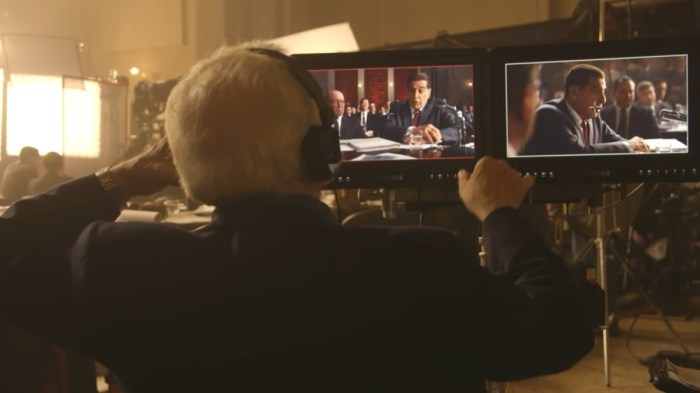
The director stands as a central figure in the filmmaking process, orchestrating the vision and ensuring its seamless execution from initial concept to final product. Their role extends far beyond simply issuing instructions; it encompasses a deep understanding of narrative, aesthetics, and the technical aspects of filmmaking. This role necessitates collaboration, communication, and a profound understanding of each stage of production.The director’s influence shapes the entire film, from the initial script development and casting choices to the final editing and post-production sound design.
This comprehensive involvement ensures the film accurately reflects the director’s artistic vision and effectively conveys the story to the audience.
Director’s Responsibilities Across Production Stages
The director’s responsibilities are multifaceted and evolve throughout the various stages of film production. Understanding these responsibilities is crucial to appreciating the director’s impact on the final product.
- Pre-Production: During pre-production, the director’s role is pivotal in shaping the film’s core elements. They work closely with the producer to define the film’s scope, budget, and timeline. This collaborative effort allows for realistic planning and resource allocation. The director also collaborates with the screenwriter to refine the script, ensuring its clarity, consistency, and emotional impact.
Crucially, the director actively participates in casting decisions, selecting actors who can embody the characters and bring the narrative to life. This process includes meetings with actors to discuss their interpretations of the role and the director’s vision for their performance.
- Production: In the production phase, the director’s primary responsibility is to translate the script and vision into a tangible film. They oversee the filming process, ensuring each scene adheres to the creative intent. This involves directing actors, providing clear instructions, and maintaining a smooth workflow on set. The director is also responsible for maintaining the visual aesthetic of the film by working closely with the cinematographer and production designer.
They constantly monitor the progress of the film, adapting to challenges and adjusting plans as needed to keep the project on schedule and within budget.
- Post-Production: Post-production marks the final stage of the film’s creation. Here, the director collaborates with the editor to assemble the footage into a cohesive narrative. The director often reviews various edits, providing feedback on pacing, rhythm, and emotional impact. They work with the sound designer to create the appropriate atmosphere and enhance the emotional resonance of the film.
The director’s role in post-production is critical to ensuring the final product accurately reflects the vision established throughout the entire process.
Director-Crew Collaboration
Effective filmmaking hinges on the collaborative spirit between the director and other crew members. This synergy fosters a unified creative vision and ensures the successful execution of the film.
- Collaboration with Producers: The director and producer work together to manage the film’s budget, schedule, and overall logistics. The producer’s expertise in practical matters complements the director’s creative vision, ensuring the project remains financially viable and within reasonable timelines. Their relationship is essential for effective communication and conflict resolution.
- Collaboration with Cinematographers: The director collaborates closely with the cinematographer to achieve the desired visual style and mood. The cinematographer’s technical expertise in lighting, camera angles, and composition, along with the director’s artistic vision, results in visually captivating imagery.
- Collaboration with Actors: The director-actor relationship is crucial in bringing characters to life. The director guides actors through the character’s motivations, emotional arc, and nuances. This dynamic relationship is vital for the film’s success, as actors bring the director’s vision to the screen.
Director’s Role in Film Production Stages
This table Artikels the key stages of film production and the director’s responsibilities in each.
| Stage | Director’s Role |
|---|---|
| Pre-Production | Defining the film’s vision, script refinement, casting decisions, budget and schedule management. |
| Production | Directing actors, overseeing filming, maintaining the visual aesthetic, resolving on-set challenges. |
| Post-Production | Reviewing edits, collaborating with editors, sound designers, and providing feedback to achieve the desired final product. |
Directors and Film History
The evolution of filmmaking is intrinsically linked to the vision and artistry of its directors. From the early pioneers who experimented with narrative form to the contemporary auteurs who push the boundaries of cinematic expression, directors have shaped the very essence of the medium. Their choices, reflecting the socio-political landscapes of their time, have profoundly impacted the way we experience and understand film.The director’s role has undergone a significant transformation throughout film history.
Initially, a director’s influence was often less pronounced compared to the writer’s or producer’s. However, as the craft of filmmaking matured, the director’s position gained prominence, ultimately becoming a crucial creative force in the production process. This evolution is reflected in the changing techniques, styles, and narrative approaches employed by directors across different eras.
Significant Directors and Their Contributions
A thorough understanding of film history necessitates examining the contributions of key directors. Their unique styles, techniques, and interpretations of narrative have shaped the cinematic landscape.
- D.W. Griffith, a pioneer of American filmmaking, revolutionized narrative structure and camera techniques. His innovative use of close-ups, long shots, and editing techniques, such as parallel editing, significantly advanced the art of storytelling. Griffith’s films, like The Birth of a Nation, while controversial in their content, undeniably pushed the boundaries of early cinematic storytelling.
- Sergei Eisenstein, a Russian filmmaker, is renowned for his innovative use of montage, a technique that emphasizes the juxtaposition of images to create meaning and evoke emotion. His films, including Battleship Potemkin, are considered masterpieces of cinematic expression, demonstrating a profound understanding of the power of visual storytelling.
- Orson Welles, a groundbreaking American filmmaker, is celebrated for his innovative approach to cinematography, narrative structure, and visual storytelling. Citizen Kane, a landmark film, stands as a testament to his profound influence on filmmaking, pushing boundaries and revolutionizing narrative techniques.
- Akira Kurosawa, a Japanese filmmaker, introduced a distinctive visual style to world cinema. His films, like Seven Samurai, exemplify his mastery of visual storytelling, emphasizing dramatic action sequences, emotional depth, and profound human drama. His unique cinematic language and thematic explorations are unparalleled in the history of cinema.
- Ingmar Bergman, a Swedish filmmaker, explored profound existential themes in his films. Bergman’s works, known for their intimate character studies and exploration of human psychology, have resonated with audiences globally. His unique visual style and profound thematic explorations have profoundly impacted cinematic art.
Evolution of the Director’s Role
The director’s role has evolved significantly from the early days of filmmaking to the present. This evolution is evident in the director’s influence on the narrative, the technical aspects of filmmaking, and the creative vision presented.
- Early Filmmaking: In the early stages of cinema, the director’s role was often less defined, with the focus shifting between writers, producers, and cinematographers. The emphasis was on the technical aspects of filmmaking. This era is characterized by the development of fundamental techniques in filmmaking, which would form the foundation for future generations.
- Classical Hollywood: The Classical Hollywood era saw a rise in the director’s creative authority, with directors like Howard Hawks and John Ford defining the iconic style of Hollywood cinema. The director’s role was essential in shaping the narrative and visual style of the film.
- Modern and Contemporary Filmmaking: Modern and contemporary filmmaking, with directors like Quentin Tarantino and Greta Gerwig, show the increasing complexity and diversity of cinematic styles. Directors often have a more significant creative input, shaping not only the narrative but also the visual and technical aspects of the film.
Reflection of Social, Cultural, and Political Context
Directors’ choices often reflect the social, cultural, and political context of their time. This is apparent in the themes, characters, and settings they choose to portray.
- Social Issues: Directors frequently address social issues in their films, reflecting the prevalent concerns of their time. For example, films during the Civil Rights Movement in the United States often depicted the struggle for equality and justice.
- Cultural Shifts: Cultural shifts are frequently reflected in directors’ cinematic approaches, with directors adapting to evolving societal values and norms. For instance, films from the New Hollywood era often portrayed the changing social landscape and the disillusionment with traditional values.
- Political Landscape: The political climate of a particular era is frequently depicted in the films produced during that time. Films about political movements, revolutions, or war often reflect the specific political tensions of their period.
Comparison of Directorial Approaches Across Eras, Directors in movies
Different eras of filmmaking are marked by unique directorial approaches.
| Era | Key Characteristics | Examples |
|---|---|---|
| Early Cinema | Experimentation with narrative form, camera techniques, and editing. | D.W. Griffith’s The Birth of a Nation |
| Classical Hollywood | Emphasis on storytelling, visual style, and character development. | Orson Welles’ Citizen Kane |
| Modern and Contemporary | Greater diversity in styles, themes, and techniques. Exploration of diverse perspectives and narratives. | Quentin Tarantino’s Pulp Fiction |
Director’s Influence on Visual Storytelling: Directors In Movies
Directors wield significant power in shaping the cinematic experience, not just through narrative choices but also through meticulous control of visual elements. They employ a diverse toolkit of techniques to craft a compelling visual language, communicating themes, emotions, and atmospheres to the audience. This intricate process of visual storytelling is integral to the director’s artistic vision and the overall impact of the film.Directors skillfully orchestrate visual elements to construct a narrative that transcends mere dialogue and plot.
This visual language, encompassing framing, composition, color, and movement, serves as a potent means of conveying complex ideas and eliciting emotional responses from the audience. The director’s understanding of these elements allows them to create a powerful and immersive cinematic experience.
Framing and Composition
Visual framing and composition are fundamental tools in a director’s arsenal. Framing dictates what the viewer sees, highlighting specific details and concealing others. Through the arrangement of elements within the frame, directors guide the audience’s attention and perception of the story’s events. Composition, the arrangement of visual elements within the frame, often reflects the emotional state of the characters or the overall tone of the scene.
A symmetrical composition, for example, might suggest harmony or balance, while an asymmetrical one might portray conflict or unease. The precise positioning of characters, objects, and light within the frame, alongside the angle of the shot, are crucial elements in conveying the director’s intended message.
Color and Light
Color and light play a critical role in establishing mood and atmosphere. Warm colors like reds and oranges can evoke feelings of passion, warmth, or danger, while cool colors like blues and greens can suggest tranquility, sadness, or mystery. The use of lighting, from harsh shadows to soft illumination, further amplifies the emotional impact of a scene. A brightly lit scene might suggest joy or clarity, while a dimly lit one might suggest suspense or fear.
The director’s careful selection of color palettes and lighting techniques can significantly impact the viewer’s interpretation of the narrative. For instance, a film set in a dark, shadowy forest with muted color palettes can create an atmosphere of suspense and foreboding.
Manipulation of Time and Space
Directors manipulate the viewer’s perception of time and space through various techniques. Slow-motion shots can stretch time, emphasizing a moment of significance or highlighting the emotional weight of a particular action. Fast-motion, conversely, can compress time, creating a sense of urgency or chaos. The use of different camera angles, shot lengths, and editing styles can also contribute to this manipulation.
By controlling the pace and rhythm of the visuals, directors can guide the audience’s experience of time, making certain moments feel longer or shorter, more significant or less consequential.
Visual Metaphors and Special Effects
Visual metaphors and special effects are powerful tools for conveying abstract ideas and enhancing the director’s vision. A recurring motif, such as a specific object or image, can symbolize a deeper theme or character trait. Special effects, from elaborate CGI to simple practical effects, can create breathtaking imagery and further immerse the viewer in the world of the film.
They allow directors to explore fantastical elements, enhance the realism of a scene, or create symbolic imagery. For example, the repeated use of a character’s reflection in a mirror might symbolize their inner turmoil or self-doubt. Furthermore, visually striking special effects, like the use of explosions or elaborate sequences in a science fiction film, add to the spectacle and further solidify the director’s creative intent.
Directorial Choices and Audience Reception
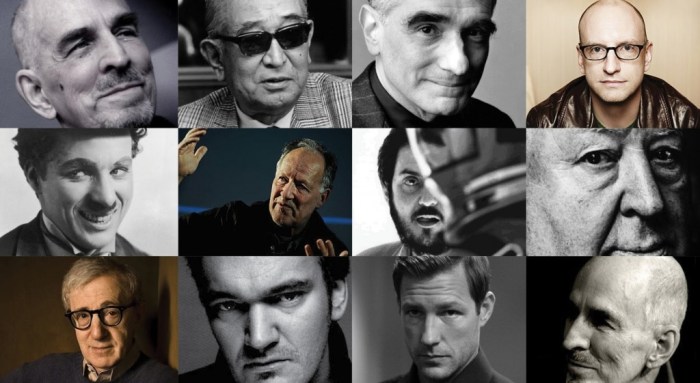
A director’s choices profoundly impact how an audience perceives and interprets a film. These choices, spanning casting, editing, and musical scores, shape the narrative’s emotional impact and influence audience engagement. Understanding these influences allows for a deeper appreciation of the director’s craft and the diverse responses a film can elicit.A multitude of factors influence audience response to a director’s choices.
These factors range from personal experiences and cultural backgrounds to prevailing social and political climates. The director’s deliberate choices, therefore, act as catalysts, triggering a wide spectrum of emotional responses, and ultimately shaping the overall reception of the film.
Factors Influencing Audience Response
Various factors contribute to how an audience responds to a film. Individual perspectives, prior knowledge, and expectations play a critical role. Cultural context and societal values significantly shape interpretations, often leading to varied receptions of the same film across different demographics. Furthermore, the prevailing social and political environment can also color the audience’s interpretation, sometimes even leading to controversy.
Differing Interpretations Based on Director’s Vision
A director’s unique vision can lead to varying interpretations of a film. A film’s narrative, symbolism, and visual language all contribute to the director’s intended meaning. However, individual viewers may draw different conclusions based on their personal experiences, cultural background, and pre-existing beliefs.
Examples of Directors with Diverse Reception
Certain directors have generated both critical acclaim and public controversy. Quentin Tarantino, for example, is known for his stylized violence, unique dialogue, and unconventional narratives. His films have garnered both fervent praise and harsh criticism, highlighting the inherent subjectivity of audience response. Similarly, David Fincher’s work often elicits intense reactions, owing to his complex characters, unsettling imagery, and often ambiguous narratives.
Impact of Casting, Editing, and Music on Audience Reactions
Casting decisions can significantly affect audience reception. A well-chosen actor can embody a character, enhancing the emotional impact of the film, while a less suitable casting choice can detract from the film’s overall effectiveness.Editing choices profoundly influence how the audience experiences a film. The pacing, rhythm, and visual transitions crafted through editing can either heighten tension, evoke emotion, or create a sense of unease.
Clever editing techniques can subtly guide audience interpretations, while poor editing can disengage viewers.Music is another crucial element influencing audience reactions. A compelling soundtrack can amplify the emotional impact of a scene, evoking specific feelings and setting the mood for the entire film. Poorly chosen or inappropriate music can diminish the film’s impact, or even create unintended humorous effects.
Director’s Vision in Specific Genres
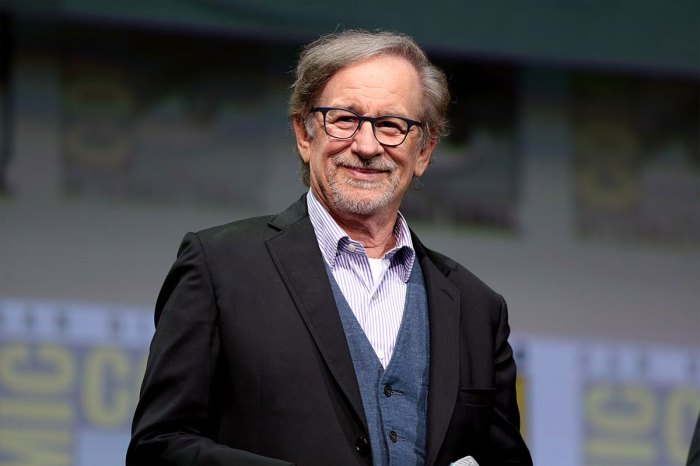
Directors bring a unique perspective to each genre, shaping the narrative, visual style, and emotional impact of their films. This distinctive approach is often a reflection of their personal experiences, background, and the specific cinematic language they have developed. The director’s vision is paramount in creating a cohesive and impactful experience for the audience within a particular genre.Directors employ diverse strategies to craft compelling narratives within various genres.
This involves the creative selection of themes, characters, settings, and visual elements to establish a specific atmosphere and convey the desired emotions. For instance, an action director might prioritize dynamic camera movements and fast-paced editing to create a sense of urgency and excitement, while a horror director might use suspenseful music and unsettling imagery to evoke fear and dread.
The director’s choices contribute significantly to the genre’s overall impact.
Action Genre
Action films frequently showcase a director’s ability to create visually stunning and dynamic sequences. They must balance the action elements with character development and narrative structure. Directors like Christopher Nolan, known for his intricate plots and complex narratives, have applied a unique approach to action, blending it with intellectual and psychological elements in films such as
- Inception*. Conversely, directors like Michael Bay, known for his spectacular special effects and frenetic pacing, have excelled in delivering large-scale action spectacles like
- Transformers*.
Horror Genre
The horror genre allows directors to explore themes of fear, suspense, and the macabre. A director’s unique vision can significantly influence the tone and style of the film, ranging from psychological horror, such as
- The Silence of the Lambs*, directed by Jonathan Demme, to supernatural horror, like
- The Conjuring*, directed by James Wan. Directors’ personal experiences and anxieties can shape their approach to the genre. For example, a director with a history of anxieties might craft a film that delves into the anxieties of the characters more deeply.
Romance Genre
The romance genre, while often perceived as more straightforward, can be approached with a wide array of cinematic styles. A director’s vision can shape the film’s tone, from whimsical and lighthearted to deeply emotional and poignant. Directors like Sofia Coppola, known for her visually evocative and introspective films, have brought a unique approach to romance, as seen in
- Lost in Translation*. On the other hand, directors like Nora Ephron, known for her witty and engaging dialogue, have crafted charming and humorous romantic comedies, like
- When Harry Met Sally…*.
Director’s Background and Genre Influence
A director’s background, including their previous experiences, educational background, and personal preferences, can greatly influence their work within a specific genre. For instance, a director who grew up in a rural setting might create a film that depicts the struggles of rural communities in a way that resonates with their experiences. Similarly, a director with a technical background might excel in showcasing the intricate details of a particular genre, as seen in films that heavily rely on visual effects.
Directors from diverse backgrounds can bring different perspectives and sensitivities to the same genre, leading to variations in cinematic styles and approaches.
Epilogue

In conclusion, the director’s role in filmmaking extends far beyond simply directing actors. They are storytellers, visual artists, and cultural interpreters, shaping narratives, influencing audiences, and leaving an indelible mark on cinematic history. Their choices and collaborations profoundly impact the final product, creating a rich tapestry of storytelling experiences.
FAQ Summary
What are some common directorial techniques?
Directors utilize various techniques to convey mood and theme, including camera angles, lighting, editing, and mise-en-scène. These techniques work in conjunction to craft a specific atmosphere and impact the viewer’s emotional response.
How do directors influence audience interpretation?
Casting choices, editing styles, and musical scores all contribute to how an audience perceives a film. The director’s vision profoundly shapes the audience’s understanding and interpretation of the story.
How has the director’s role evolved over time?
The director’s role has evolved significantly throughout film history. Early cinema saw a different emphasis on the director’s contribution compared to the more prominent role they hold today.
What is the importance of the director-actor relationship?
The director-actor relationship is crucial in bringing a character to life. Effective collaboration and communication between the two are essential for a successful performance and interpretation of the role.
